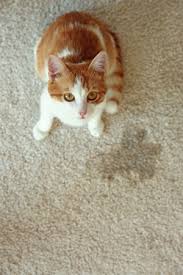Canvas is made from hemp and is used for casual shoes and sneakers. Some “canvas” sneakers are made from cotton. Rubber is traditionally used for the sole. They are considered low-maintenance footwear.
Tools:
- Nylon bristle brush or old toothbrush
- Cleanser such as laundry detergent, dishwashing liquid or a “suede and fabric” shampoo
- Nylon scrub pad
- Baking soda
- Plain paper
- White cream shoe polish (for white canvas tennis shoes)
Manufacturers may suggest spraying the tops of new canvas sneakers with a fabric care spray before you wear them. Your best bet is to follow any care instructions included with your sneakers.
Technique:
- If the sneakers are muddy, wait until they are dry before cleaning
- Knock off any loose dirt by smacking the sneakers on the pavement or tapping the soles together over a waste basket or newspaper
- Wipe them with a damp cloth to remove any remaining caked-on dirt
- Remove laces
- Rinse shoes with warm water inside and out
- Scrub the canvas sneakers’ outsides, insides and liners gently with a toothbrush or nylon brush and a mixture of water and mild detergent
- Rinse with clean cool water
- If scuff marks remain, scrub gently with nylon pad. Rinse again
- If the liners still retain foot odor, scrub them with a paste of baking soda and water
- Wash laces in with a load of like-colored laundry
- Stuff canvas sneakers with crumpled brown paper bags, paper towels or white office paper, not newspaper or colored paper as the ink can transfer onto the canvas
- Let them air-dry along with the laces. Do not dry them near a fireplace or heater. Direct heat breaks down canvas fabric and causes shoes to become dried out and brittle
- When the shoes are thoroughly dry, replace inserts and laundered laces
- Sneakers with mesh inserts can be cleaned the same way as plain canvas shoes
- If stains persist on white canvas sneakers, lightly dab on white liquid shoe polish
Colored Canvas Sneakers and Special Detailing
When cleaning colored canvas sneakers, be sure to use a non-bleaching soap, and do a small spot test with your cleaning mixture to be sure it doesn’t fade or leach out color.
If your sneakers have leather detailing, dampen and clean the canvas as directed and use leather cleaner on any leather parts.
Washing Canvas Sneakers in a Washing Machine
I also have gotten good results by cleaning canvas sneakers in the washing machine, but most shoe manufacturers discourage machine washing sneakers since it can break down the adhesives used to glue the shoe together.

